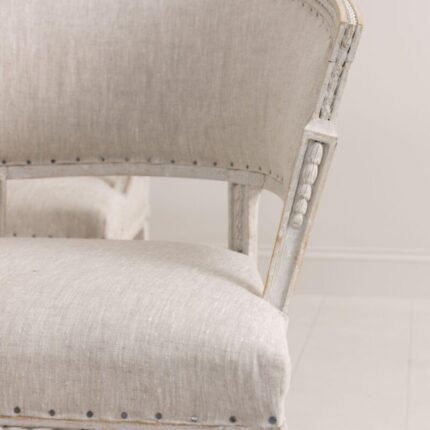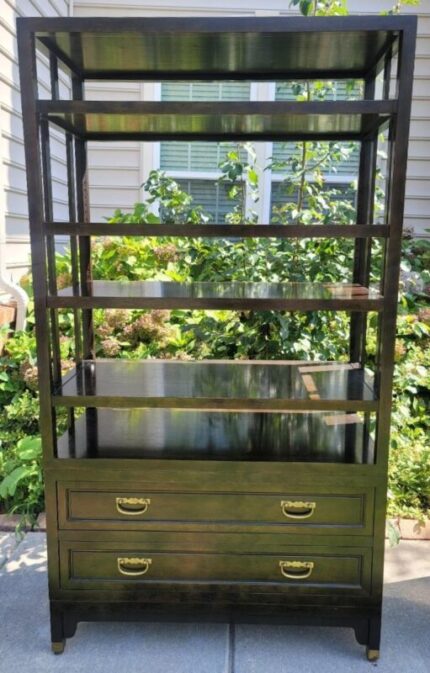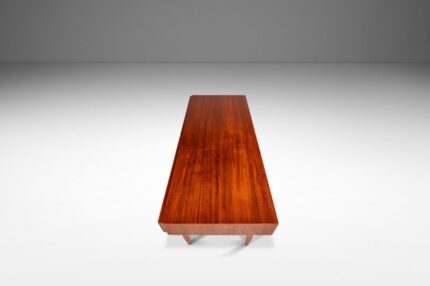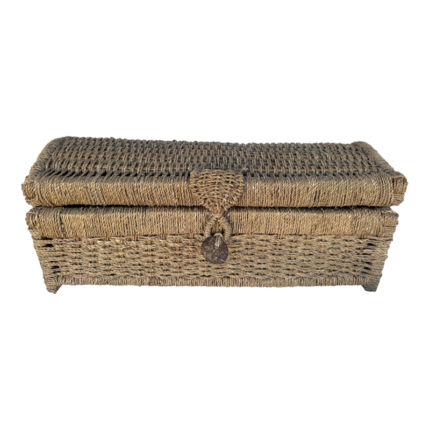Vintage Design
Louis XVI style console sideboard in mahogany with three flattened half-moon shaped superposed trays and a straight apron with a curved central notch. It stands on four high spinning top legs, topped by composed shaped uprights: inversed twisted and gilt balusters and fluted balusters. Rich chiselled and gilt bronze ornamentation such as notched plates, friezes of eggs and water leaves and an openwork hearts frieze balcony on the inferior tray, water leaves and grapes on uprights, laurel leaves and a similar gallery on the intermediary tray. The apron is adorned with tin sheets painted in blue aventurine imitation on which chiselled and gilt bronze decor are detached figuring cornucopias, crowns of flowers, knots and birds perched on flowery branches; the whole framed and divided by notched frames and plates. In the apron centre, in the notch, a Wedgwood porcelain circular medallion with a blue sky background and a white bas-relief figuring the Three Graces, is surrounded by a gilt bronze frieze of eggs. Three Carrare marble tops in flattened half-moon shaped. The “Wedgwood” inscription is also on the back of the biscuit medallion. Thanks to that mark, the porcelain can be dated between 1812 and 1822. This indication, combined with the fact that the plates imitating the blue aventurine have back English marks indicating their assembly position, permit to suppose that it was an English work of the first half of the 19 th century. Weisweiler worked a lot with the marchand-mercier Dominique Daguerre, who was established in London and could be at the initiative of the original model reproduction, stamped Weisweiler and housed in Baltimore at the Walters Art Museum, coming from the collection of the Baron Alfred of Rothschild and then the one of Henry Walters. This original exemplar has a Wedgwood biscuit medallion figuring the « Sacrifice for Peace “ recessed in the centre of the console. Work realized in the first part of the 19th century. Adam Weisweiler (1746-1820) was a German cabinetmaker that became a master in France in 1778. He moved in Faubourg Saint-Antoine where he quickly acquired a great reputation. He specialized in small furniture and was known for his use of Sevres or Wedgwood porcelain plates. His creations were very appreciated by aristocracy and the great Europe courts. He became the provider of the French and English courts, the Prince of Wales, the queen of Naples or Catherine II of Russia, thanks to the marchand – mercier Daguerre. He became a precursor in taste and decorative trend thanks to an elaborate and fine executed production. For that, he worked with best craftsmen as the bronze makers Gouthière and Thomire. Progressively during his career, he produced more and more « normal size » furniture, also very elegant and with a great execution quality. He passed through the French Revolution without many trouble, he became the official provider of the Imperial court and then stopped his production in 1809, a year after his wife death and his son internment.
| Manufacturer |
Adam Weisweiler |
|---|---|
| Design Period | Before 1890 |
| Year | |
| Production Period | Before 1890 |
| Identifying Marks | This piece is attributed to the above-mentioned designer/maker. It has no attribution mark |
| Style | Antique |
| Detailed Condition | |
| Restoration and Damage Details |
Patina consistent with age and use
|
| Product Code | CEJ-488293 |
| Materials | Bronze, Mahogany, Porcelain, Marble, Tin |
| Color | Gold |
| Width |
123 cm 48.2 inch |
| Depth |
31 cm 12.0 inch |
| Height |
89 cm 34.8 inch |
| Weight Range | Standard — Between 40kg and 80kg |
| Duties Notice | Import duty is not included in the prices you see online. You may have to pay import duties upon receipt of your order. |



































Reviews
There are no reviews yet.